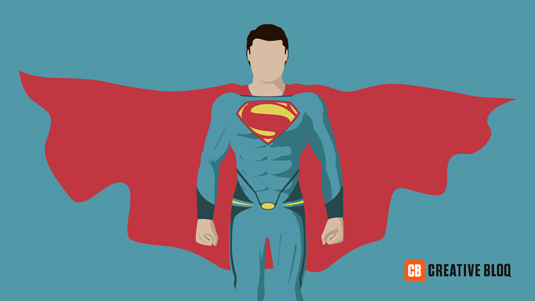10 things you wish you'd been told about the design industry
Why didn't anyone tell us when we were starting out? We list 10 must-know truths about working as a designer.
When most people first get a design job, they're full of excitement, anticipation and optimism. After a few year's work, a lot of that initial naive enthusiasm is gone – and a lot of this is down to the harsh realities of the real world. While you might become a designer because you're a good draftsman, or you want to improve the world of visual communication, the truth is that it's not all drawing pretty pictures or coding amazing examples of HTML5.
With all this in mind, we've rounded up our top 10 things we wished we'd known about working in the design industry right from the beginning. If you know anyone who's just starting out in design, then you'll want to point them towards this article. Well, as long as you're prepared to watch the optimism drain from their face and all their dreams suddenly die, that is...
01. There's no such thing as 9 to 5

This is especially true if you're a freelancer trying to create a name (and income) for yourself. The simple fact is that in order to make ends meet, you'll often be accepting low-quality, low-paid jobs just to be able to eat at the end of the month. This inevitably means late nights toiling away to the expense of having a social life.
Often working within a design agency can be even worse, because you'll have bigger clients, so the expectations and deadlines will be that much tighter. You'll need to be prepared to pull all-nighters, and if you've got a partner they'll need to be understanding of your predicament to avoid arguments.
02. You need to be thick-skinned

While we all enjoy getting good feedback, the likelihood is that you're going to come up against some really challenging opinions and ideas, especially when you're first starting out. Until you develop the confidence to present yourself and act as the expert, you'll need to have a thick skin to deal with what can feel like very personal criticism and absurd directions.
03. It's not meant to be fun - it's a business

This is absolutely crucial for anyone starting out as a freelancer: the design business is just that - a business. As a result there will be tax forms you need to complete, records you need to keep, invoices you need to issue and a whole host of other bits of confusing paperwork to contend with. Make sure you're on top of this early, and develop a system to keep it in check. Expect to spend 20 per cent or more of your time just doing paperwork.
04. It's not just about knowing software

Just because you've got the latest Mac Pro and a shiny license for the Adobe Creative Cloud, it doesn't make you a designer. This is a common mistake that beginners make - they think that because they can buy, borrow or steal the software, it means they can automatically design. Nothing could be further from the truth.
Daily design news, reviews, how-tos and more, as picked by the editors.
While you don't have to have been to design school to be an effective designer, it certainly helps to develop a critical eye and also provides a good grounding in the theory of design – both essential skills if you want to get on in this industry.
If you can't afford to spend several years at college, get some books from the library, sign up to online courses, and read design blogs (including this one) to get up to speed. This all leads on nicely to:
05. The learning never stops

Just because you've graduated from art college, it doesn't mean that's you ready for the world of design. The best designers are constantly refining their knowledge and skills, learning new techniques and professionally developing. This is more important than ever as a way to ensure that you are offering the best possible service to your clients, but equally to distinguish yourself from the competition. Take pride and invest in yourself - it's worth it.
06. Design is a commodity

The sad fact of the world today is that design has become a commodity. This is partly because of the democratisation of the toolsets; you can go out and buy a license for the latest tools for £50 and install it on almost any computer these days. The wide-spread availability of "themes" and "UI packs" means that there'll always be someone who can do it cheaper or faster than you.
You need to accept early on that the clients who'd be happy with an off-the-shelf solution to their design problem aren't the clients that will help you develop an effective portfolio, and it's not always worth competing solely on price.
07. Like herpes, posting online is forever

This is a general life lesson, of course, but one that particularly applies to anyone starting out as a designer in an increasingly interconnected and digital world. In simple terms, whatever you say or do online becomes a matter of public record. This is true whether you want it to be found or not, so don't ever say or do anything online that you wouldn't say or do in person.
Think twice before posting compromising photos, controversial opinions or personal attacks on Facebook, and question whether it's a good idea to troll people on Twitter (hint: it's not).
08. Low-paying clients want the earth

You might think that just because a client is only paying a few hundred pounds for a design, that they'll be happy with the first thing you send them. And that a client paying thousands will be a lot more work. But the truth is that the amount a client wants to get involved in the process (and the amount of revision you'll need to go through) bears absolutely no relation to the amount they're paying.
More often than not you'll find that the lowest value clients (in monetary terms) are the biggest drain on your time. You can't do anything about this until you have experience, at which point you'll start to recognise the warning signs.
09. You can't be everything to everyone (unless you're a superhuman)

Don't ever agree to do a job that's beyond your skill set - it's simply not worth the pain and upset you'll cause to yourself and your client. If you aspire to be a photographer, by all means go and train to become one, but don't sell your services as a photographer until you can confidently offer the service.
Clients will appreciate your honesty in admitting that you can't perform a particular service, and you can build up a network of colleagues that might be able to refer work your way.
10. A contract is not optional equipment

Finally, it's absolutely essential that you use a contract for every single client job you do. It doesn't matter if it's a £50 sketch or a £20,000 advertising campaign, you need to ensure you protect yourself.
Firstly it will help avoid any disagreements about the level of fees you've agreed, but it will also ensure that if a client fails to pay you've got legal recourse, not to mention that you can claim payment for your time if the client pulls out half-way through the project. Good contracts will also split payments to match key stage deliverables, helping your cashflow and mitigating financial risk.
Related articles:

Sam is a designer and illustrator based in Scotland, UK. He splits his time between art and design, motion and video and writing for various creative titles. He has written a book about web design, Pro CSS3 Layout Techniques and contributed to typography book, Fonts and Typefaces Made Easy.
